Pilot #5

Brief Synopsis
Cast & Crew
George Sidney
Franchot Tone
Marsha Hunt
Gene Kelly
Van Johnson
Alan Baxter
Film Details
Technical Specs

Synopsis
In March 1942, on the island of Java, Major Eichel, the Dutch commander of a group of Allied troops, must choose a pilot to fly a suicide mission against the Japanese, using the squad's only working plane. Although four other Americans eagerly vie for the chance, Eichel selects Lt. George Braynor Collins, who plans to bomb not only the enemy's planes, but an aircraft carrier as well. After the seemingly fearless George takes off with a 500-pound bomb strapped to his plane, Eichel questions the remaining pilots about their cohort. Henry Willoughby Claven, George's longtime friend, recalls that when he first saw the hard-working George after he had graduated from law school, he seemed peculiarly serious but did not inquire as to why. Winston Davis then describes how he first met George while working as an Air Corps recruiter: Because of a bad recommendation from Barrett, George's college dean, Winston is forced to reject George's application to join the Air Corps. Winston is nonetheless struck by George's intense manner, and, on a hunch, tracks him to a bar in his home town. There, the bartender reveals that years before, when George's former boss, Governor Hank Durban, was exposed as a crook, George was ostracized by the town. George picks a fight with Winston and so impresses him with his combative spirit that Winston changes his mind about recruiting him. Back on Java, while Vito listens anxiously to George's radio reports, Henry continues his recollections, remembering a time when George was still a law student: After Dean Barrett informs the top-ranked George that Governor Durban has expressed interest in hiring him, an elated George proposes to his childhood sweetheart, Freddie Andrews. Freddie happily accepts, and together they begin building their dream house. Months later, Henry visits the couple at the half-finished house and senses that, despite their youthful appearance, they have suddenly aged. After Henry concludes his story, Vito S. Alessandro talks about his relationship with George, whom he first met just out of law school: In order to please his uncle, who works for Governor Durban, Vito, a brash but incompetent lawyer, offers George a partnership in his firm. Although Freddie, who is Vito's secretary, discourages George from becoming involved with Vito and Durban, the ambitious George accepts. Later, after Durban has revealed to the lawyers his latest land-grabbing scheme, Freddie realizes that George has fallen under the governor's seductive spell. Despite Freddie's warnings, George agrees to help the governor evict poor farmers by claiming that a valuable water project is to be constructed on their land. Soon after, Vito's beloved brother Nikola arrives from Italy, having barely escaped alive from the Facists. When the infirmed Nikola, who had been Vito's boyhood hero, sees a portrait of Benito Mussolini hanging on Vito's office wall, he explodes and accuses his brother of treachery. Later, Nikola, now half-mad, kills himself. Guilt-ridden, Vito seeks comfort from Freddie, whom he has longed loved, and is confronted by a jealous George. Freddie is disgusted by George's petty emotions and informs him that while she still loves him, she no longer likes him. After George slaps her for saying that he is no better than the Facists, Freddie ends their relationship and moves to California. Still on Durban's payroll, George and Vito then help to evict the Pritchard family, proud farmers who have refused to abandon their land. When Durban's thugs toss tear gas canisters into the Pritchards' house, the lawyers watch in horror as the Pritchards' mentally ill daughter Hanna crawls up the chimney in fear and is suffocated. Enraged by the tragedy, George accuses Durban of murder, but Durban smugly denies any responsibility. After George slugs him, Durban orders his bodyguards to beat George and leave him for dead. George survives, however, and supplies the U.S. Attorney with evidence to indict and convict the governor. For his efforts, George is spurned by the community and is forced to work at menial jobs until he decides to join the Air Corps. Back in Java, as George nears his target, Vito describes how he encountered George at pilots' training school and arranged for him to be reunited with Freddie during a three-day furlough: At the Los Angeles bus station, George spies Freddie and rushes to her side. Forgetting the past, the couple boards a bus for Las Vegas, marries and moves into a rental cottage. When George's furlough is up, Freddie says a brave goodbye and bids him to do his duty. Back in camp, after Eichel states that he now understands George's courage, he and the other pilots listen to the radio while George shoots down several Japanese planes, then dive-bombs into their ship. With George's sacrifice, Eichel proclaims that every Facist enemy, "our enemy," shall be destroyed.

Director
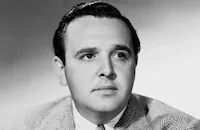
George Sidney
Cast

Franchot Tone
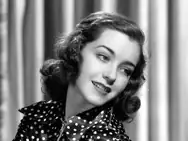
Marsha Hunt

Gene Kelly
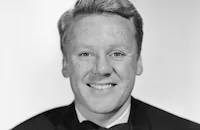
Van Johnson

Alan Baxter
Dick Simmons

Steve Geray

Howard Freeman

Frank Puglia
William Tannen
Edward Fielding

Frank Ferguson
Carl Saxe

Peter Lawford
Jack Gardner

Sara Haden

James Davis
Cliff Danielson

Jacqueline White

Marilyn Maxwell

Betty Jaynes

Marie Windsor
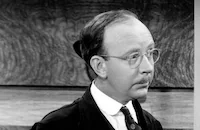
Hobart Cavanaugh

Kay Medford
Dick French
William Halligan
Fred Graham
J. Lewis Smith
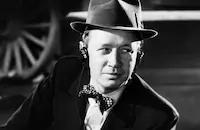
Eddie Acuff
Billy Wayne

Dorothy Morris
J. Frank Hamilton
Ellen Lowe
Eugene Martin
Eddy Chandler

Ralph Dunn
Mark Daniels
Leigh Sterling
William Bishop
James Craven
Helen Thurston

Frances Rafferty

James Millican

Howard Mitchell
Nellie V. Nichols
Harry Semels
John Dilson
Crew
Albert Akst
Robert D. Andrews
Glen Barner
Howard Campbell
B. P. Fineman
Cedric Gibbons
Arnold Gillespie
Lennie Hayton
David Hertz
Don Jahraus
Sanford Roth
Douglas Shearer
Paul Vogel
George White
Edwin B. Willis

Film Details
Technical Specs

Articles
Pilot No. 5
This was only the second film for Gene Kelly after an auspicious debut opposite Judy Garland in For Me and My Gal (1942). He was happy to take it on to show the studio he could handle straight dramatic parts as well as musicals but later said he thought that because of his eagerness to prove himself and hold his own against Tone, he tended to overact in the picture. Nevertheless, he enjoyed the experience and was glad to be working with pal Van Johnson, who would soon have much more success breaking out of the ranks of supporting players in another doomed-pilot war film, A Guy Named Joe (1943), with Spencer Tracy and Irene Dunne.
In contrast to Kelly's beginnings at the studio where he would remain a major star for years to come, this was the end of the line for Franchot Tone and MGM. Born into a family of wealth and privilege, Tone began his career on stage and signed with the studio for his second film, Howard Hawks's Today We Live (1933). Despite an abundance of talent, intelligence and ambition to play roles of greater range and complexity, Tone was relegated to mostly bland leading man assignments, shepherding the studio's A-list female stars, most often Jean Harlow and Joan Crawford, to whom he was married from 1935 to 1939. He had a couple of breakout opportunities with The Lives of a Bengal Lancer (1935, on loan to Paramount) and Mutiny on the Bounty (1935), for which he received a Best Actor Oscar nomination, along with fellow cast members Clark Gable and Charles Laughton. But MGM soon had him back in run-of-the-mill pictures, and after Fast and Furious (1939), he left. Pilot No. 5 was his first time back at the studio in four years, and he never worked there again.
Pilot No. 5 was produced by what became known as "the Schary Unit," after Dore Schary, a young writer whose ambitious ideas to make quality B pictures so impressed studio head Louis B. Mayer that he made Schary a production chief. Schary's specialty became "programmers," lower-budget films that were somewhere between A and B pictures and meant to be either at the top or bottom of a double bill, depending on the region and companion feature. Pilot No. 5 was made by the unit close on the heels of another wartime drama, Journey for Margaret (1942), a major hit that made a star of the studio's most prominent child actor, Margaret O'Brien. Schary, whose notions of worthy properties and left-wing ideals often put him in conflict with the iron-fisted, ultra-conservative Mayer, left the studio not long after Pilot No. 5, but returned years later, replacing Mayer as MGM chief when the older man ran into a career-ending conflict with the holder of the studio's purse strings, Nicholas Schenck.
This was also a big step up for director George Sidney, who soon left the B picture ranks for top-budget productions, including four more pictures with Gene Kelly and such major musicals as The Harvey Girls (1946), Annie Get Your Gun (1950), Show Boat (1951), and Pal Joey (1957), starring Frank Sinatra in a tamer version of the role that had made Kelly a star on Broadway years earlier.
The extensive cast list features in a bit role Peter Lawford, whose brief close-up in this picture reportedly convinced Mayer to sign him to a long-term contract. And although she most likely ended up on the cutting room floor (or can you spot her?), studio records also list future star Ava Gardner among the minor players.
Director: George Sidney
Producer: B.P. Fineman
Screenplay: David Hertz
Cinematography: Paul Vogel
Editing: George White
Art Direction: Cedric Gibbons
Original Music: Lennie Hayton
Cast: Franchot Tone (George Braynor Collins), Marsha Hunt (Freddie Andrews), Gene Kelly (Vito Allessandro), Van Johnson (Everett Arnold).
BW-71m. Closed captioning.
by Rob Nixon

Pilot No. 5
TCM Remembers Van Johnson - Important Schedule Change on TCM In Honor To Salute VAN JOHNSON
The new schedule for the evening of Tuesday, December 23rd will be:
8:00 PM In the Good Old Summertime
9:45 PM A Guy Named Joe
12:30 AM Thirty Seconds Over Tokyo
2:30 AM The Last Time I Saw Paris
4:30 AM Thrill of a Romance
Van Johnson (1916-2008)
Van Johnson, the boyish leading man whose clean cut, All-American appeal made him a top box-office draw for MGM during World War II, died on December 12 in Nyack, New York of natural causes. He was 92.
He was born Charles Van Dell Johnson on August 25, 1916, in Newport, Rhode Island. By his own account, his early childhood wasn't a stable one. His mother abandoned him when he was just three and his Swedish-born father offered little consolation or nurturing while he was growing up. Not surprisingly, Johnson found solace in singing and dancing lessons, and throughout his adolescence, he longed for a life in show business. After graduating high school in 1934, he relocated to New York City and was soon performing as a chorus boy on Broadway in shows such as New Faces of 1936 and eventually as an understudy in Rodgers and Hart's musical, Too Many Girls in 1939.
Johnson eventually made his way to Hollywood and landed an unbilled debut in the film version of Too Many Girls (1940). By 1941, he signed a brief contract with Warner Bros., but it only earned him a lead in a "B" programmer Murder in the Big House (1941); his contract soon expired and he was dropped by the studio. Johnson was on his way back to New York, but as luck would have it - in the truest Hollywood sense - friends Lucille Ball and Desi Arnaz introduced him to Billy Grady, a lead talent scout at MGM, which was currently Ball's new studio. Johnson was signed up and almost immediately MGM had a star on its hands.
It might have been slow going at first, with Johnson playing able support in films such as Dr. Gillespie's New Assistant and The War Against Mrs. Hadley (both 1942). By 1943 the studio capitalized on his broad smile and freckles and starred him in two of the studio's biggest hits: A Guy Named Joe and The Human Comedy. Those two films transformed him into a boxoffice draw with a huge following, particularly among teenage girls. A near fatal car accident that same year only accentuated the loyalty of his fans, and his 4-F status as the result of that accident created an opportunity for him when so many other leading actors of the era (James Stewart, Clark Gable) were off to war. Johnson was quickly promoted as MGM'sleading man in war heroics and sweet romancers on the big screen: The White Cliffs of Dover, Thirty Seconds Over Tokyo (both 1944), Thrill of a Romance, the episodic Week-End at the Waldorf (both 1945), and a musical remake of Libeled Lady entitled Easy to Wed (1946).
Hits though these were, it wasn't until after the war that Johnson began to receive more dramatic parts and better material such as supporting Katharine Hepburn and Spencer Tracy in the political farce State of the Union (1948). other significant roles included the well-modulated noir thriller The Scene of the Crime, the grim war spectacle Battleground (both 1949), the moving domestic drama Invitation (1952) in which he played a man who is paid to marry a woman (Dorothy McGuire) by her father. Before he left MGM, he closed his career out in fine form with the sweeping musical Brigadoon, co-starring Gene Kelly and Cyd Charisse; and the lilting soaper The Last Time I Saw Paris (both 1954) with Elizabeth Taylor.
After he left MGM, the parts that came Johnson's way weren't as varied, but he had his moments in The Caine Mutiny (1954), the beguiling romance drama Miracle in the Rain (1956) with Jane Wyman; and his lead performance in one of the first successful made for-TV-movies The Pied Piper of Hamelin (1957). By the '60s, Johnson returned to the stage, and played the title role in London's West End production of The Music Man. He then returned to Broadway in the drama Come on Strong. He still had a few good supporting parts, most notably as Debbie Reynolds' suitor in Norman Lear's scathing satire on marital differences Divorce American Style (1967); and television welcomed his presence on many popular shows in the '70s and '80s such as Maude, Fantasy Island, The Love Boat and of course Murder She Wrote. There was one last graceful cameo in Woody Allen's The Purple Rose of Cairo (1985), yet for the most remainder of his career, Johnson worked mainly on the dinner theater circuit before retiring from showbiz completely by the mid-90s. He is survived by a daughter, Schuyler.
by Michael T. Toole
TCM Remembers Van Johnson - Important Schedule Change on TCM In Honor To Salute VAN JOHNSON
Quotes
Trivia
Notes
The working titles of this film were Skyway to Glory, The Story of Number Five and Destination Tokyo. According to a February 1943 Hollywood Reporter news item, M-G-M went back and forth on the various titles before settling on Pilot #5, the title of the original screen story. Most reviews list the title as Pilot No. 5. Opening credits include the following written foreword: "Millions of men have taken up arms to defend their freedom against the forces who would destroy it. One of these millions was George Collins. This is his story, before and after Pearl Harbor."
Although George White receives onscreen credit as editor, Albert Akst is listed as editor in Hollywood Reporter news items and production charts. In June 1942, Hollywood Reporter announced that Philip Dorn was to star in the picture with Franchot Tone, Marsha Hunt and Gene Kelly. Wally Cassell is listed as a cast member in Hollywood Reporter, but his appearance in the final film has not been confirmed. Some scenes were shot at the Cal-Aero aviation training school near Riverside, CA, according to Hollywood Reporter. Pilot #5, which was the first Hollywood film to deal with the Japanese invasion of Dutch East Indies, was one of six M-G-M pictures that was criticized by Sgt. Bill Davidson of Yank magazine for being "insufficient to the war effort."















